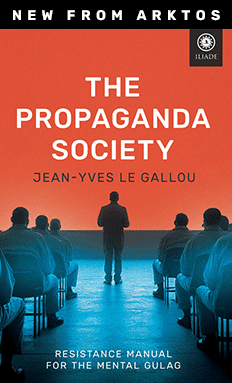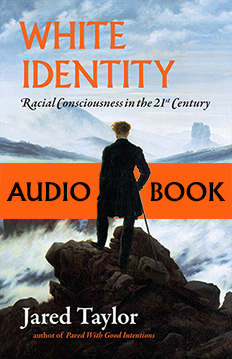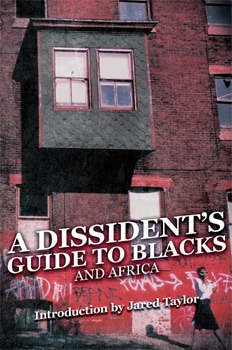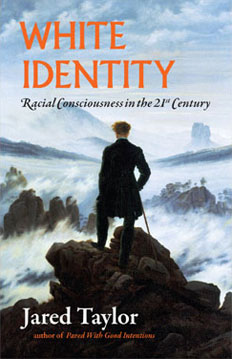America’s Hidden Racial Divide: A Mysterious Gap in Psychosis Rates
Daniel Bergner, New York Times, December 3, 2024
{snip}
As a growing body of research reveals, Black people in the United States suffer the hallucinations and delusions of psychosis — the voices that seem to emanate from outside a person’s head, the visions, the paranoias, the breaks with common reality — at a rate roughly twice that of white people. In Europe, racial disparities regarding psychosis are yet wider. Even after researchers control for socioeconomic factors and address issues of diagnosis, the alarming racial gaps remain.
Studies suggesting a link between minority or outsider status and psychosis run back about a century. A 1932 study looked at hospital admissions for psychosis in Minnesota. It found that Norwegian immigrants were admitted at twice the rate of native Minnesotans or Norwegians in their home country. By the 1970s, researchers were turning specifically to racial divides in psychiatric disorders, and by the 2000s, the relationship between race and psychosis (which appears to outstrip any correlation between race and more common conditions like depression) was becoming well studied in both the United States and Europe. Yet despite the mounting data, in the United States, until recently, the issue was relegated to the edges of mainstream psychiatry — or perhaps beyond the edges.
“A voice in the wilderness,” Roberto Lewis-Fernández, a professor of clinical psychiatry at Columbia University, says, describing the feeling that work on the issue was long marginalized. He and Deidre Anglin, a leading U.S. researcher into the relationship between psychosis and race, both point to the keen cultural focus on pervasive racism after George Floyd’s murder as one reason for what Anglin calls an “exponential increase in attention” to the striking racial patterns in psychosis.
Though psychiatric disorders have mostly eluded precise scientific explanations, proving too complex for brain imaging and other technology to illuminate, it’s clear that some combination of genetic and circumstantial factors contributes to psychosis. The genetic creates a predisposition. But predisposition is not disease; it is susceptibility, a shifting of the odds that is, researchers assume, equally distributed across races. Triggers are needed to profoundly alter the mind. Current explanations for the racial gaps in psychosis tend to zero in on the catalysts of discrimination, denigration and the insidious sense of helplessness — or “social defeat,” as psychiatry terms it — that racism can impose. The data is strongly suggestive, if short of proving causation. Intuitively, the link is hard to ignore. Experiences of racism seem to stir and amplify the deafening voices of self-condemnation and fears of terrible danger that can be part of the alternate realities of psychosis.
{snip}
Deidre Anglin, who has spearheaded much of the past decade’s research on racial disparities and psychosis, is Jamaican American, the daughter of first-generation immigrants. {snip}
{snip}
In the United States, Black-white ratios are at least 1.9 to one; some studies show that disparities for nonwhite Hispanics are narrower but still notable. In Europe overall, Black-white differentials hover in the vicinity of four to one. In England, the gap for Black Caribbean and Black African immigrants runs between four to one and more than six to one. In the Netherlands, for Moroccan, Surinamese and Antillean immigrants, the ratio is around three to one.
Among the immigrant groups, one plausible factor is the dislocation and stress that can come with the immigrant journey itself. But while such trauma may seem an obvious trigger, given that many immigrants arrive in their new nations after dangerous journeys and unable to speak the language that surrounds them, researchers have found repeatedly that second-generation immigrants to the United States and Europe develop psychosis at rates at least as high as their parents. Something is happening in the new country.
For a long while — more persistently in the United States than Europe — misdiagnosis was the dominant explanation for the psychosis disparity between Black people and white people. This line of thought concentrates on schizophrenia, the psychotic disorder with the most vivid connotations of eruptive violence. Boiled down, the theory is that because of racial bias, a practitioner confronted with two similarly hallucinating, delusional and struggling patients, one white and one Black, is much more likely to be deeply frightened or disturbed by the Black patient and to categorize him as schizophrenic. In this way, the thinking goes, the rates of diagnosis become skewed.
Jonathan Metzl, a psychiatrist and professor of sociology and psychiatry at Vanderbilt University, explored and extended this idea in his 2009 book, “The Protest Psychosis: How Schizophrenia Became a Black Disease.” He argues that in the 1960s and ’70s, the clinical application of the schizophrenia diagnosis — and even aspects of the official diagnostic criteria — changed in response to white fears about the civil rights and Black Power movements. Mining records from a Detroit-area psychiatric institution, Metzl traces a transformation: from schizophrenia’s being seen as a largely female — and unthreatening — disease to its becoming a disorder of aggression and a means, whether or not consciously intended, to lock up Black men.
The misdiagnosis theory is compelling, and some studies have continued to support it. But Anglin and other researchers have removed the issue of practitioner judgment by looking at self-reported hallucinations and delusions that haven’t yet led to diagnosis. Racially divergent rates remain glaring.
A pair of Anglin’s studies focuses on reasons for the difference in rates. In this research, involving a total of over 9,000 subjects, self-reported experiences of racial discrimination correlated tightly with self-reported psychotic symptoms. The number of symptoms rose, in close alignment, with the frequency of the discrimination, suggesting causation. It was possible, of course, to take this data and argue that psychosis, which is frequently infused with paranoia, leads to a heightened sense of being subjected to discrimination, rather than discrimination being a trigger for psychosis. Anglin explained that she tries to mitigate this problem by examining the link between discrimination and psychotic symptoms that are distinct from paranoia; she has found that those other symptoms are also in close alignment.
{snip}















